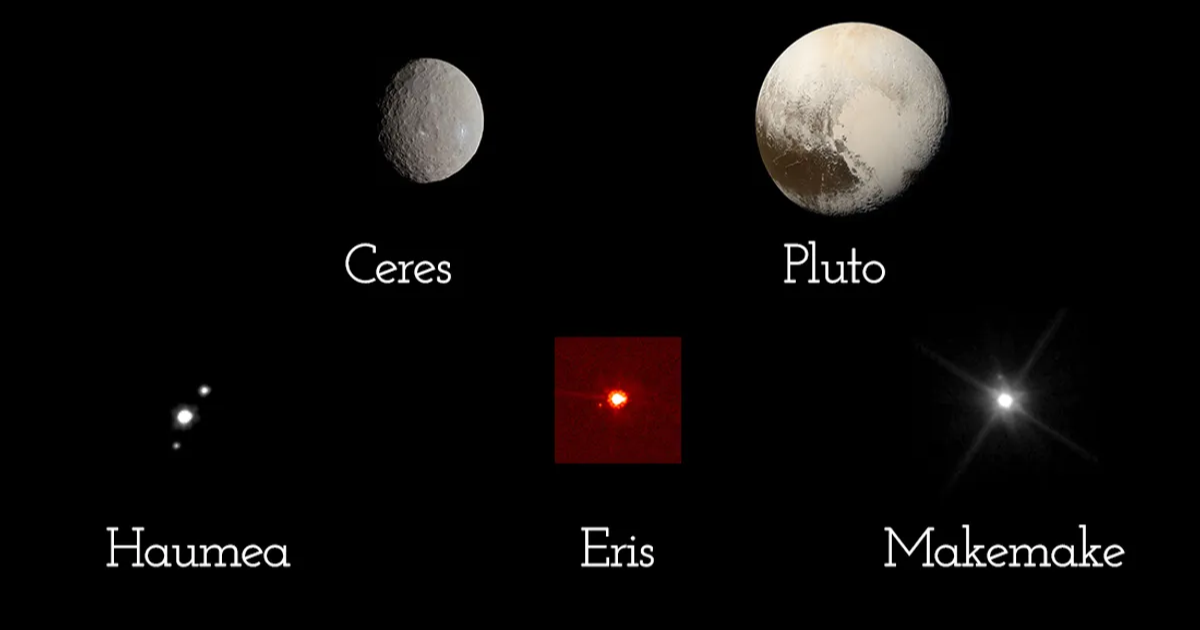
Nobody was using the term Dwarf Planet until 2006 when the International Astronomical Union (IAU) had a vote to redefine what a planet actually is.
When the vote passed, Pluto was no longer considered a planet and instead became the most famous dwarf planet in the solar system.
The IAU’s definition of a planet states that the object must go around the sun, it must have sufficient mass to have had pulled itself into a ‘roughly’ round shape, and it must have cleared its orbital path of debris.
Pluto meets the first two requirements, but the third it does not.
While almost everyone knows about Pluto being a dwarf planet, many are not aware that there are five others in our solar system. Makemake, Hauema, Cerces, and Eris.
In addition, there are many other potential objects that may become dwarf planets in the future.
There are currently seven candidates that have been proposed as dwarf planets, but have not yet been fully analyzed.
In addition, the IAU is most likely going to have to redefine what a planet is again at some point.
The current definition is imprecise, and does not account for the thousands of exoplanets that we have discovered (and the untold billions that are likely out there).
In addition, saying that an object must be ‘roughly’ round is not easily measurable as it does not have strict parameters.
The next General Assembly of the IAU will take place in Rome in 2027 so that would be the next opportunity to bring additional clarity to this important subject.
Some people even hold out hope that the revised definition (if one is approved) would promote Pluto back to planet status again.
In my eyes, Pluto will always be a planet.
If you thought that was interesting, you might like to read about a second giant hole has opened up on the sun’s surface. Here’s what it means.